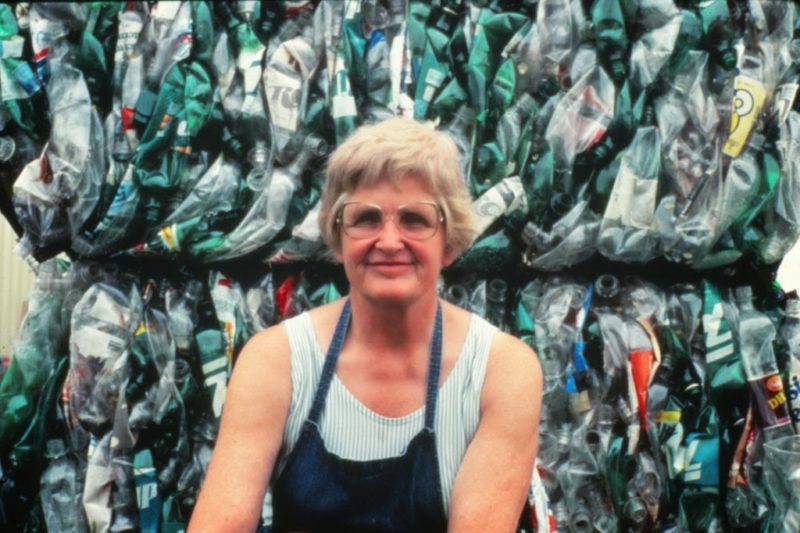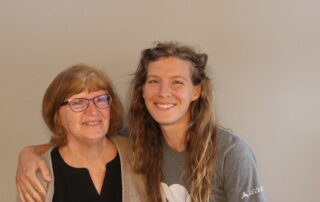Elise Moser first heard the name Milly Zantow at a conference and was surprised to learn that the driving force behind plastic recycling was from her new town – Sauk City. Moser thought she didn’t know about her because she was new to Wisconsin but asking around, she learned that lots of people didn’t know Milly’s story.
Milly Zantow first saw extensive recycling on a trip to Japan. She saw bundles of cardboard, glass, and plastic each day outside her hotel.
“That image stayed with her,” says Moser, author of What Milly Did: The Remarkable Pioneer of Plastics Recycling. “And she began looking into how they could recycle back in her town of Sauk City.”
Zantow called Borden Milk’s Milwaukee plant and asked what happens when a jug comes down the line with a flaw in it. She learned that they melted it down and remade it so she knew that it was possible to remake plastic.
Soon after she returned from Japan, Zantow read in the newspaper that her local landfill had filled too quickly and that the protections put in place to prevent the garbage from polluting the soil had failed. She wondered if recycling could fix the problem.
“Milly being Milly, she just started doing more research,” describes Moser. “She read a plastics encyclopedia and learned about the different types of plastic.”
She went to Flambeau Plastics in Baraboo and convinced them to experiment with what could be made with recycled plastic. They agreed to help but also told Zantow they would need the plastic ground up to use.
In 1979, Zantow and friend Jenny Ehl cashed in their life insurance policies and bought a commercial plastics grinder for $5,000 to start E-Z Recycling. They traveled down to Chicago in a truck to pick it up.
“The men laughed at these two white haired ladies from Wisconsin driving a truck,” says Moser.
But Zantow and Ehl kept at it and worked hard to grow the program. People from around the country and around the world called asking for advice.
For the program to work, though, Zantow knew they needed a way to classify the different types of plastic. Brainstorming, she came up with the number code to go inside the triangles that allow recyclers to divert plastics into the right stream for reuse.
Despite her pioneering work, most people don’t know her name today. Moser attributes that to Zantow’s self-effacing attitude and status as a housewife.
“Milly wasn’t all about Milly,” says Moser. “She didn’t care about celebrity and she was a middle-aged housewife so I think a lot of people didn’t see the value in what she created.”
Elise Moser is the author of What Milly Did: The Remarkable Pioneer of Plastics Recycling










